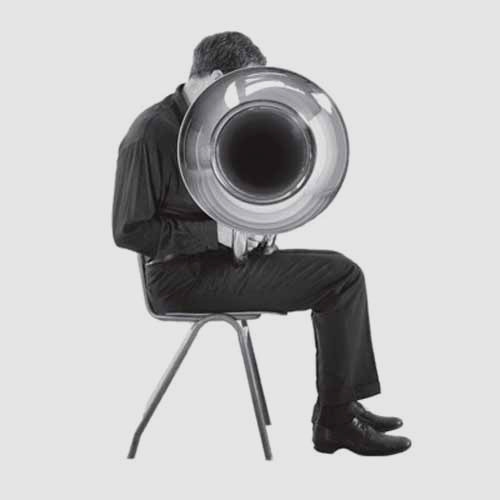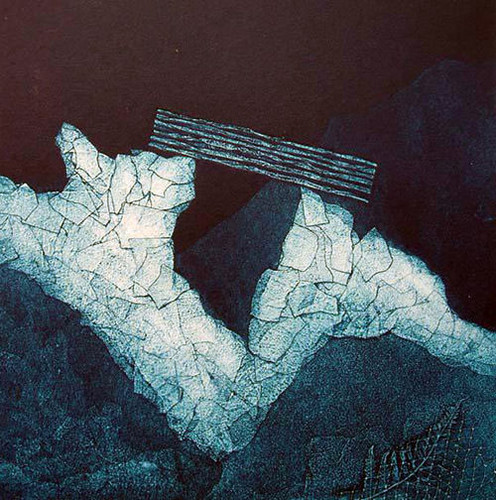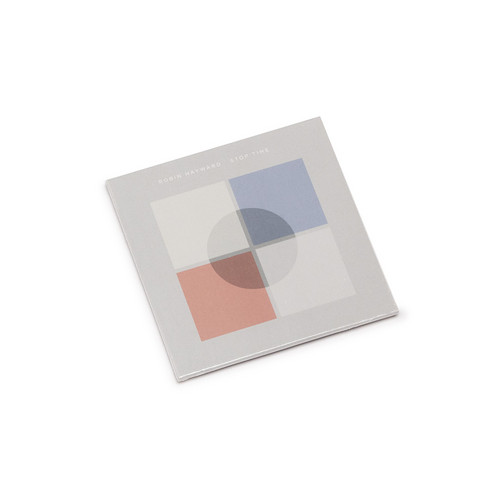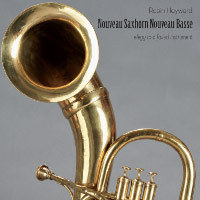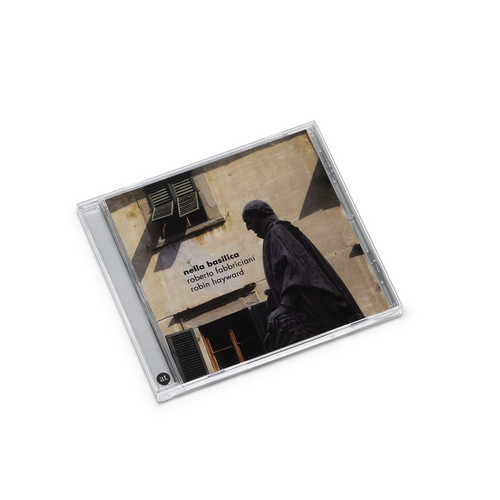Robin Hayward
Words of Paradise
**Edition of 300. LP picture disc replicating the multi-colored circular scores; housed in a black die-cut sleeve with liner notes on the rear side** Robin Hayward (b. 1969 in Brighton, England) is a tuba player and composer based in Berlin. Since the 1990s, he has been concerning himself with experimental and radical playing techniques on brass instruments, initially through the discovery of the "noise-valve", later through development of the first fully microtonal tuba in 2009. In 2012, he inv…
States of Rushing
Microtonal articulations and noise concretions form the expressive stylistic elements of this extremely organized network of audio emergencies. They include the spurious frequencies apparently produced by hissing devices and the hypnotic patterns with almost industrial textures that have been calibrated according to mechanical envelopes. In “State of Rushing” it does not seem immediately evident that these sounds are the result of manipulating traditional instruments, such as the tuba.
Just attr…
Reidemeister Move plays Borromean Rings
Edition of 300 numbered copies fullcolour Picture LP. Robin Hayward (microtonal tuba) and Christopher Williams (contrabass) performing "Borromean Rings" might be compared to playing a board game such as chess. Notation is used to define a field of possible moves for navigating within harmonic space. Unlike chess however the idea is not to overcome the other player, but rather to challenge them to explore continually fresh avenues within the harmonic framework laid out by the score.
Rubble Master
The cassette showcases two contrasting explorations of the microtonal tuba. On side A, Rubble Master explores noise production, with the lips and tongue acting as noise generators which are filtered using half-valve techniques. On side B, Underground Music uses live-electronics to simulate the movement of two related tunings moving in opposite directions, like trains through the abandoned underground station in which the piece was premiered.
Stop Time
Robin Hayward plays microtonal tuba in Catherine Christer Hennix's ensemble and Stop Time is his first composition to be released on Important Records. Stop Time was commissioned for a festival of the same name taking place in Leuven in 2013. It is the first piece to use a subset of the three-dimensional physical version of the Hayward Tuning Vine, invented in 2012, as a musical score. The harmonic space implied within the four cubes contained within the subset, based on prime numbers two (octav…
Nouveau saxhorn nouveau basse
The tuba player and composer Robin Hayward has introduced revolutionary playing techniques to brass instruments, initially through the discovery of the 'noise-valve', and later through the development of the first fully microtonal tuba in 2009. In 2012 he invented the Hayward Tuning Vine, initially as a visualisation of the harmonic space implicit within the microtonal tuba. Collaborations include such musicians as Roberto Fabbriciani and Charles Curtis, along with composers such as Christian Wo…
Nella Basilica
Nella Basilica is the singular result of a meeting between Robin Hayward andlegendary flautist Roberto Fabbricciani, whose work with Luigi Nono defined extended technique and instrument invention for late twentieth-century music. Working in the ancient church in Arezzo, Hayward and Fabbricciani improvise across five sections (“Nella Basilica,” “Adagio,” “Riflessione,” “Colori Di Cimabue,” and “Arezzo”), with the massive interior space a continual, living presence. Fabbricciani brings three bass …
Valve division
LAST COPIES, NOW DELETED - special priced first solo release by the Berlin-based tuba player. 'Though not specifically about the tuba, the three pieces presented here reflect particular ways of regarding the instrument. Whereas in the first two pieces, Dial and Coil, it is viewed as a labyrinth of tubing within which air may be trapped and redirected, in the final piece, Valve Division, it is seen as a collection of individual tube lengths, tuned to one another by positioning the valve slides in…

